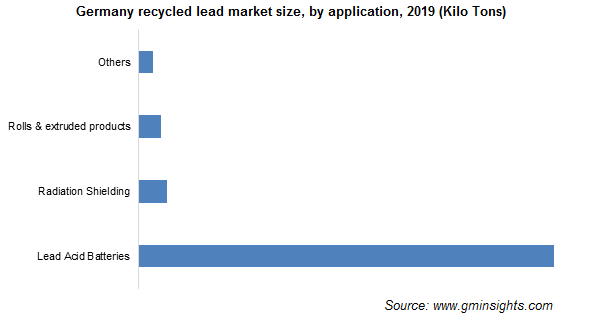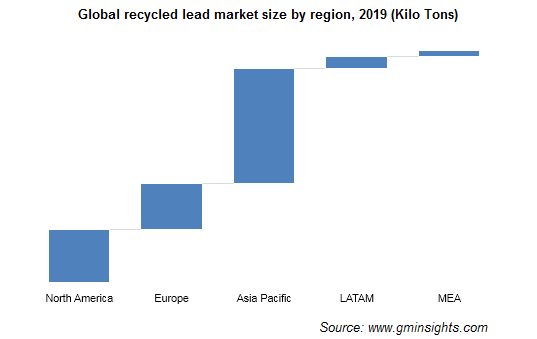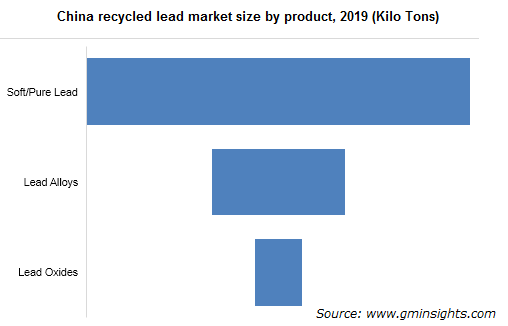Home > Chemicals & Materials > Advanced Materials > Recycled Lead Market
Recycled Lead Market Analysis
- Report ID: GMI4579
- Published Date: Feb 2020
- Report Format: PDF
Recycled Lead Market Analysis
The product segment of the recycled lead market is segregated into soft/pure lead, lead alloys, and lead oxides. In 2019, soft/pure lead held the largest share of over 65%, as it is the primary refined product of lead recycling and is largely used as a raw material in lead-acid battery production.
Lead alloys and oxides are further produced using pure lead. The three product types are largely differentiated on the basis of their respective properties. Various elements such as copper, silver, indium, tin, calcium etc. are added to pure lead resulting in high strength alloys, that are further used as anti-corrosive sheets in marine and construction industries

Applications of recycled lead are segmented into lead acid batteries, radiation shielding, rolls & extruded products, and others. The other segment includes paints & coatings, ammunition, etc. Lead-acid batteries occupy the highest share of over 80% of the recycled lead market. The recycled lead used in the production of lead acid batteries is fully recyclable and recoverable.
Other than lead acid batteries, secondary lead is processed, cast and rolled into various forms such as ingots, sheets, wires, billets, for further industrial uses. Among the rolls & extruded products, recycled lead wires are used in the soldering of electronic equipment.
Lead tin and lead copper alloys are extruded for use as a pipe in various industries. Extruded lead pipes are used for carrying acids and corrosive chemicals or for sheathing sensitive communication cable runs for waterproofing purposes.
The global market is further segmented as per its usage in industries such as energy, transportation, data centers, electronics, construction, healthcare, and others. The other segment includes paints & coatings, defense, nuclear, industrial etc.
Data centers will be the fastest growing industry in the recycled lead market. With the advent of cloud computing and the increasing need for servers by giants such as Google, the demand for data centers is increasing across the globe.
Google itself has set up over 12 data centers, with varying capacity of 2.5 million servers spread across the globe. Other companies such as IBM Corporation, Cisco Systems, Inc., Dell EMC are also a major player in the industry The demand for the recycled lead as a material for lead-acid batteries in UPS systems for data centers is expected to grow at a fast pace over the forecast timeframe.

On the basis of region, Asia Pacific accounted for a share of about 50% in the overall recycled lead market. In Asia Pacific, China is the largest recycler and consumer of lead scrap. With mounting demand for energy storage for data centers and solar energy, the low-cost lead-acid batteries will observe an intense surge of secondary lead demand over the forecast period.
Investment in recycling infrastructure is increasing in countries such as India, Malaysia, etc, which will result in greater secondary lead production. In 2017, according to China’s Ministry of Ecology and Environment., the country produced about 3.8 million metric tons of lead-acid batteries, amounting to more than 40% of the global volume.
Additionally, as per ILA, the recycling rate of lead in Europe and North America is over 95%, indicating a greater significance of recycled lead market over the forecast period.

